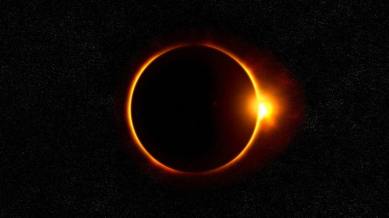Solar Eclipse 2019 India today: Here’s how to watch surya grahan online
Solar Eclipse Surya Grahan December 2019 Date, Timings, How to Watch LiveStream in India: The final solar eclipse of 2019 is going to be an annular eclipse that creates a ring of fire. Here are the details on how you can watch livestream of Surya Grahan.

Solar Eclipse 2019 India Today, Timings, Livestream: The final solar eclipse of the year 2019 will take place on December 26, creating a ring of fire in the sky. The event will fall over the Eastern hemisphere of the earth and visible from a number of countries including parts of India. However, if you are in a part where the eclipse is not directly visible, you can watch the live stream of the event.
As per Eclipseportal, the eclipse will begin around 180 kilometres west of Dammam in eastern Saudi Arabia and reach here from the west coast of Southern India. NASA’s eclipse map suggests that the path of the eclipse will cross in a south-easterly direction enabling people from cities across Karnataka, Kerala, and Tamil Nadu to directly witness the celestial event.
When to watch the final solar eclipse of 2019
As per timeanddate.com, the annular solar eclipse will begin in India at 7:59 am with a partial eclipse when the moon will touch the edge of the Sun. The annular phase or the full eclipse will start at 9:04 am, whereas the maximum eclipse will start at 10:47 am when the moon is closest to the centre of the sun. The full eclipse will end by 12:30 pm after which the moon will leave the edges of the Sun, ending the partial eclipse by 1:35 pm. The timings may differ from region to region.
Apart from India, people in the countries like Saudia Arabia, Qatar, Malaysia, Oman, Singapore, Sri Lanka, Marina Islands, and Borneo will also be able to directly witness the annular solar eclipse and its ring of fire.
Solar eclipse 2019 online livestream
People who cannot watch the last solar eclipse of 2019 directly can see the livestream of the event. There are a couple of websites that will stream the solar eclipse including Slooh.com– the official website of the Sri Lankan astronomy channel called Tharulowa Digital.
The live stream will also be available on the YouTube channel of Tharulowa Digital. For those who will be viewing the eclipse directly should remember to avoid observing with naked eyes and wear eye protection.
What is annular solar eclipse?
An annular solar eclipse is a bit different from a normal solar eclipse. In a total solar eclipse, the Moon completely covers up the Sun blocking its rays from reaching the Earth. However, in an annular eclipse, the Moon covers up the Sun from the centre but leaves the outer rim visible. This creates a ring of fire in the sky.